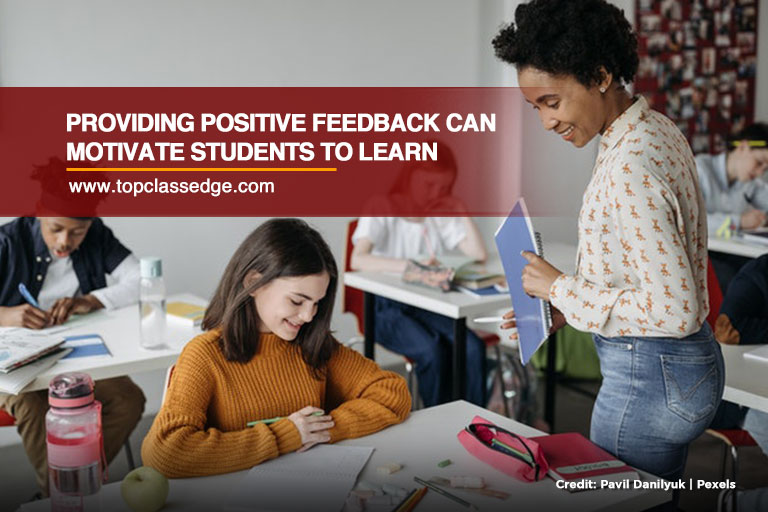
A good learning environment is crucial for students of all ages. It can mean the difference between a student who excels and one who struggles. On top of that, a positive learning environment can reduce stress and make students feel more motivated to learn. When students feel comfortable in their environment, they tend to thrive. In this article, we will discuss 8 tips on how to create a positive learning environment.
Encourage Discussions and Interaction

The key to a good learning environment is to foster a space where students feel comfortable and motivated to learn. One way to create a positive learning environment is by encouraging discussions and interaction among students. This will help them get to know each other better and encourage collaboration. It can also help them learn from each other and develop new skills.
Discussion Tips:
- Be sure to model respectful behaviour when you are discussing ideas with your classmates.
- Make sure everyone has a chance to speak, and don’t interrupt others.
- Respect different opinions, even if you don’t agree with them.
- Be open-minded, and be willing to change your opinion after hearing what others have to say.
Allow Student Collaboration When Creating Classroom Rules and Policies
When students are allowed to help create classroom rules and policies, they feel like they have a sense of ownership over the classroom. This can lead to them taking more responsibility for their own learning and behaving in a way that is respectful of both the teacher and their classmates. In addition, it can help foster a sense of community in the classroom and encourage students to work together to create a positive learning environment.
Provide Constructive Feedback
When it comes to creating a positive learning environment, one of the most important things that we can do is provide constructive feedback. This type of feedback helps students to understand what they are doing well, and what they need to work on. It also helps them to develop their skills in a constructive way.
When students receive negative feedback, it often damages their self-confidence and makes them less likely to want to learn. In contrast, when they receive positive feedback, it encourages them to continue learning and improves their self-confidence.
Providing constructive feedback is essential for two reasons. First, it allows students to identify areas in which they need improvement. Second, it helps them to develop the skills necessary for success. It is important to provide feedback that is specific, rather than general.
For example, instead of saying “you did a great job”, say “I liked the way you worked on this problem”. This type of feedback allows students to understand what they are doing well and makes them more likely to want to learn.
Appeal to Different Learning Styles
Appealing to different learning styles is a great way to connect with students and provide them with a positive experience. When students are able to learn in a way that works best for them, they are more likely to be engaged and successful in their studies. Some of the best ways to appeal to different learning styles include using visual aids, providing hands-on activities, and allowing for student choice.
One way that can appeal to students with different learning styles is by using different methods of instruction. For example, if a student is more visual, you can use more pictures and graphs in their teaching. If a student is more auditory, you can use more audio clips and music.
Set Clear Expectations
When you establish clear rules and expectations, it can help reduce student anxiety and create a more productive learning atmosphere.
Additionally, educators offering tutoring in Markham can foster a positive learning environment by creating a sense of community in the classroom. This can be accomplished by encouraging students to get to know each other and by providing opportunities for students to work together on projects.
It’s also possible to promote a positive learning environment by praising students for their effort, not just their intelligence.
Show Students You Value Their Contributions

Teachers should show their students that their contributions are valued in a number of ways. First, teachers can give students specific and timely feedback on their work. Second, teachers can provide opportunities for students to share their work with others. Finally, teachers can create a classroom culture in which students feel comfortable taking risks and making mistakes.
When teachers show their students that their contributions are valued, it has a number of benefits for the students. It helps to develop a sense of confidence in the student. When students feel that their voices are valuable, they are more likely to be committed to the process.
Reward Good Behavior
Rewarding good behaviour is important for a few reasons. When a student is rewarded for doing well, they are more likely to continue doing well. This helps to create a positive environment in the classroom, where students are working hard and motivated to succeed.
Additionally, rewarding good behaviour can help to build relationships between teachers and students. When students feel appreciated and supported by their teacher, they are more likely to want to learn and behave positively in class.
There are a few different ways to reward students for good behaviour. The most common way is with positive reinforcement, which rewards students with something they enjoy, such as praise or privileges.
Another way to reward good behaviour is with negative reinforcement, which removes something unpleasant from the student’s life when they behave well.
No matter what type of reinforcement you choose to use, it’s important that it is consistent and fair. Rewards should be given for specific behaviours that the teacher wants to see repeated, and they should be doled out in a timely manner so that students know exactly what they need to do in order to earn a reward.
It’s also important to note that rewards should be tailored to individual students. Some students may prefer positive reinforcement, while others might respond better to negative reinforcement or tangible rewards.
Trust Your Students
If you’ve done your positive learning environment research, you probably know that trust is a very important ingredient. Students tend to feel more confident when they know that their teacher(s) trust their abilities.
In this type of environment, students feel more comfortable taking risks and making mistakes. They also feel more inclined to ask questions and participate in class discussions. Ultimately, this helps them learn more effectively.
If you’re looking for tutors who can create a positive learning environment for your child, turn to Top Class Edge Learning. We provide tutoring in Richmond Hill. Call us at 647.795.0406 for inquiries.
